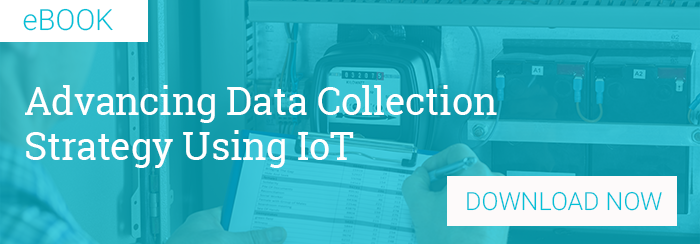The Internet of Things (IoT), a collective term relating to sensors and Internet-connected devices, continues to connect the world in ways we never imagined. IoT brings real-time visibility, enabling users to monitor and control physical assets. Reductions in sensor size and cost allow for monitoring and control on a bigger and bigger scale. One study suggests that by 2025, IoT could become a whopping $11 trillion market. Such incredible economic promise emphasizes the importance of understanding the practical changes IoT can deliver to your enterprise.
The rise of submetering, building automation systems, and sustainability initiatives suggest a large focus of IoT on the commercial market. So where can you expect IoT to have the quickest impact? The answer, most likely resides in how you manage utility usage.
 Gateway to Real-Time Data and Analytics
Gateway to Real-Time Data and Analytics
Internet-connected devices and wireless sensor networks have markedly increased the availability of real-time utility data. Building owners and facility managers can now rejoice because they have received the key to building efficiency and optimization. As the saying goes, “you can’t manage what you can’t measure.” Real-time utility data stored in the cloud means quick, easy and secure access to real-time utility consumption visualizations from anywhere with an Internet connection. The cloud provides every one of you with anytime, anywhere access to your real-time utility data because all of us have armed ourselves with a smart phone.
Imagine knowing exactly when a pipe burst so you can shut off the water to the building. Wouldn’t your building engineering staff want to know that your current electricity consumption suggests a 20% increase of your projected monthly budget? Consider the reality of modern facility management that can adjust the schedule of your HVAC system to better align with occupancy schedules. Imagine the potential impact. In fact, IoT will usher in the age of Artificial Intelligence (AI) and deliver the future of HVAC.
Let's dig in a bit more and look at a few ways IoT and cloud utility data can save you time and money.
Energy Management
Traditional metering frameworks have limited value today. Old school facility management relies on monthly energy usage reports. Imagine trying to manage energy usage based on a utility company bill or an outdated report derived from that bill. Analyzing and understanding the stale data represents an impossible task because of your vague memory and recollection of the events last month.
Who needs a report about last month’s utility usage? Tell me what’s happening now! No one wants to constantly second-guess about current energy usage, especially when facing the continual pressure of strict budgetary constraints.
Clearly, traditional metering is ineffective. Many have asked for new tools to help reduce operational costs and improve energy efficiency. Modern energy management cannot rely on the status quo of outdated metering systems.
Real-time data enables a number of opportunities for increasing the effectiveness of energy management initiatives and saving costs, such as:
- Taking advantage of utility rebates and incentive programs
- Improving building operations to decrease energy usage during low occupancy
- Detecting anomalies in energy usage due to malfunctioning HVAC equipment
- Submetering tenants to better understand usage and to bill appropriately and fairly
- Drive Asset value for the building owner or manager
Water Management
With droughts occurring on an annual basis and water prices up 41% since 2010, how you manage your building's water usage will become increasingly important in the future. Like energy, water represents an essential part of building operations from plumbing to cooling to consumption.
Traditional water metering cannot deliver real-time insights. Monthly reports provide a picture of past problems because they do not provide any tools for active management of problems as they occur. In fact, monthly reports will frustrate because they will outline the actual cost impact of your failure to manage water consumption as problems occur.
Real-time data carries a number of benefits, which can produce an outsized impact. Consider some of the following facility management victories, such as:
- Identify and repairing water leaks as they occur to mitigate water damage and inconvenience to your tenants
- Submetering to more accurately allocate water expenses amongst your various tenants
- Increasing facility management efficiency with automated remote water meter reading
- Identifying performance anomalies in pumps and other water assets before they cause maintenance issues
- Monitoring water consumption of cooling towers to ensure against catastrophic water consumption events
With the right sensor network installed, you can manage your electricity, water and gas in a single system. Clearly, alerts and notifications for all of your assets and utilities through a single pane of glass in the palm of your hand represents a large step forward.
To learn more about how Senseware can help you better manage your utility data and save you time and money, contact us today.
Editor's Note: This post was originally published in November 2015 and has been completely revamped and updated for accuracy and comprehensiveness.



